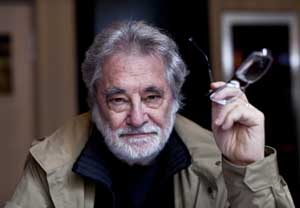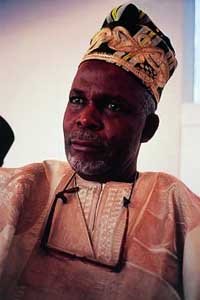Subscribe to ShahidulNews
![]()
Chobi Mela Lifetime Achievement Awards: In recognition of outstanding contribution to photography and society. The award includes a scholarship given in the name of each recipient to a deserving student, to study for a year in Pathshala, The South Asian Media Academy. Previous recipients of the Lifetime Achievement Awards have been, Golam Kashem Daddy, Manzoor Alam Beg, Amanul Haque, Shamsul Islam Almazi, Rashid Talukder, Peter Magubane and Ricardo Rangel.
Chobi Mela VI Lifetime Achievement Awards will be given to:
Naib Uddin Ahmed (Bangladesh)
 Naib Uddin Ahmed was a pioneer of photography in Bangladesh. The book ?Bangladesh? he produced with his younger brother Nawazesh Ahmed provided the first pictorial documentation of the nation. While the more gregarious Nawazesh was more in the limelight, it was the quiet, more retrospective Naib Uddin who had made photography his profession. It was he who took the harrowing images of our liberation war. A war that had affected him so deeply that he gave up photography for many years. He returned to the craft to mentor younger photographers. Few Bangladeshis are aware that some of Zainul Abedin?s greatest artworks were inspired by Naib Uddin?s photography.
Naib Uddin Ahmed was a pioneer of photography in Bangladesh. The book ?Bangladesh? he produced with his younger brother Nawazesh Ahmed provided the first pictorial documentation of the nation. While the more gregarious Nawazesh was more in the limelight, it was the quiet, more retrospective Naib Uddin who had made photography his profession. It was he who took the harrowing images of our liberation war. A war that had affected him so deeply that he gave up photography for many years. He returned to the craft to mentor younger photographers. Few Bangladeshis are aware that some of Zainul Abedin?s greatest artworks were inspired by Naib Uddin?s photography.
Pedro Meyer (Mexico)
 His contribution to contemporary photography as a creative photographer curator, editor, teacher and founder director of the renowned photography website ZoneZero, is unparalleled. Meyer brought out the first CD ROM in the world, ?I Photograph to Remember?, that had ?wall to wall? images synchronised with sound. Innovative throughout his life, Meyer?s Heresies Project of 2004 resulted in a completely novel approach to both exhibiting and publishing through a global collaborative effort. Through the Pedro Meyer Foundation, he has ensured that Mexico?s rich tradition of photography, one he helped to shape, will be passed on to the new generation.
His contribution to contemporary photography as a creative photographer curator, editor, teacher and founder director of the renowned photography website ZoneZero, is unparalleled. Meyer brought out the first CD ROM in the world, ?I Photograph to Remember?, that had ?wall to wall? images synchronised with sound. Innovative throughout his life, Meyer?s Heresies Project of 2004 resulted in a completely novel approach to both exhibiting and publishing through a global collaborative effort. Through the Pedro Meyer Foundation, he has ensured that Mexico?s rich tradition of photography, one he helped to shape, will be passed on to the new generation.
J. D. Okhai Ojeikere (Nigeria)
 While the exotica of Africa has been documented by many, it is J. D. Okhai Ojeikere?s archives of Nigerian and African culture that give us an insight into everyday life and social patterns of the region in the 60s and allow us to make comparisons with today. His ?Hair Style? project, a record of over 1000 different hairstyles, started in 1968 and is invaluable in the study of cultural and ethnographic differences. When colonisation ended, he set up his own studio ?Foto Ojeikere? and became an active member of the Nigeria Art Council, organising a festival of visual and living arts. He has devoted his life to Nigerian culture ever since.
Chobi Mela Blog
While the exotica of Africa has been documented by many, it is J. D. Okhai Ojeikere?s archives of Nigerian and African culture that give us an insight into everyday life and social patterns of the region in the 60s and allow us to make comparisons with today. His ?Hair Style? project, a record of over 1000 different hairstyles, started in 1968 and is invaluable in the study of cultural and ethnographic differences. When colonisation ended, he set up his own studio ?Foto Ojeikere? and became an active member of the Nigeria Art Council, organising a festival of visual and living arts. He has devoted his life to Nigerian culture ever since.
Chobi Mela Blog





Leave a Reply
You must be logged in to post a comment.